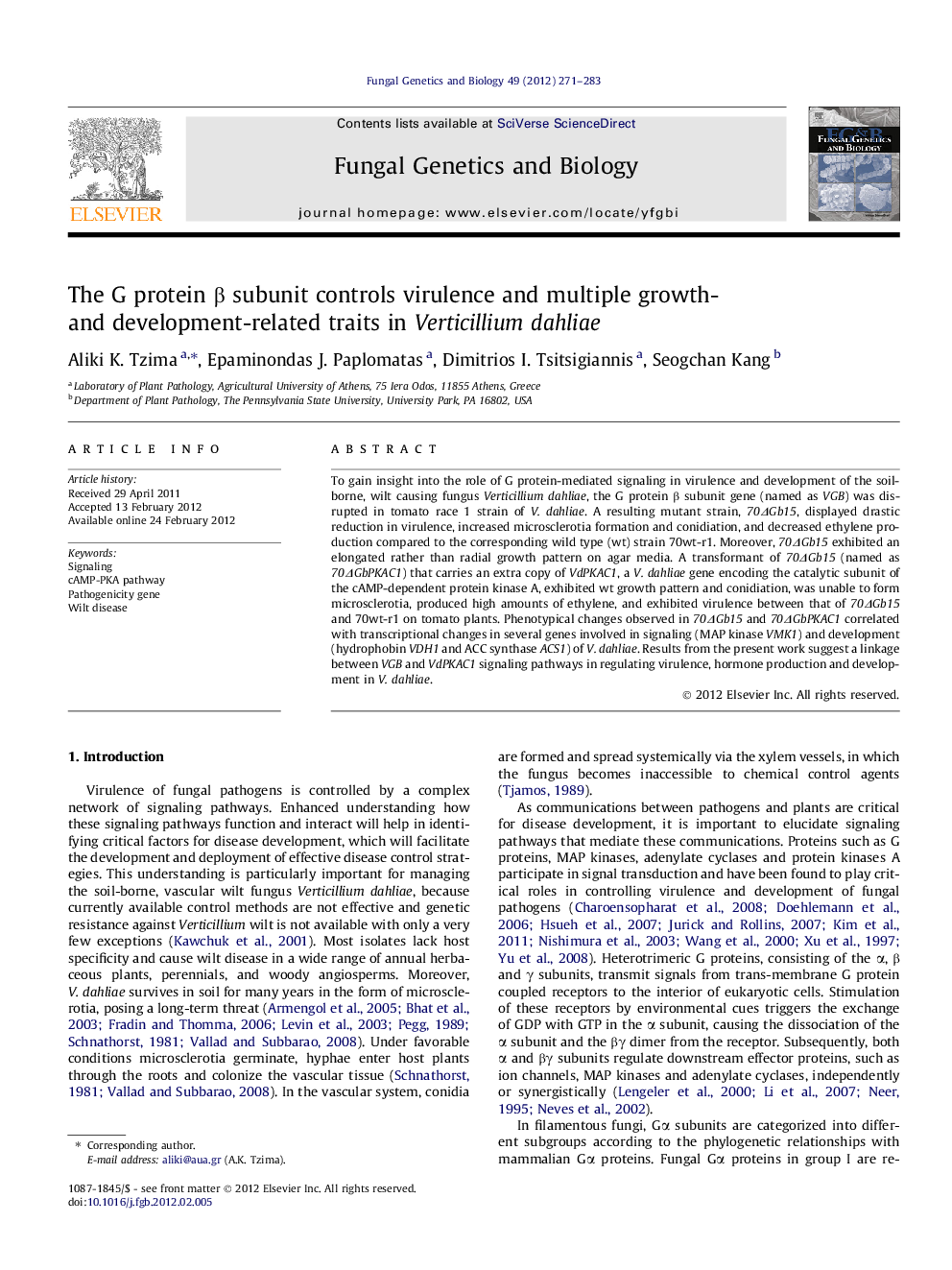| Article ID | Journal | Published Year | Pages | File Type |
|---|---|---|---|---|
| 2180950 | Fungal Genetics and Biology | 2012 | 13 Pages |
To gain insight into the role of G protein-mediated signaling in virulence and development of the soilborne, wilt causing fungus Verticillium dahliae, the G protein β subunit gene (named as VGB) was disrupted in tomato race 1 strain of V. dahliae. A resulting mutant strain, 70ΔGb15, displayed drastic reduction in virulence, increased microsclerotia formation and conidiation, and decreased ethylene production compared to the corresponding wild type (wt) strain 70wt-r1. Moreover, 70ΔGb15 exhibited an elongated rather than radial growth pattern on agar media. A transformant of 70ΔGb15 (named as 70ΔGbPKAC1) that carries an extra copy of VdPKAC1, a V. dahliae gene encoding the catalytic subunit of the cAMP-dependent protein kinase A, exhibited wt growth pattern and conidiation, was unable to form microsclerotia, produced high amounts of ethylene, and exhibited virulence between that of 70ΔGb15 and 70wt-r1 on tomato plants. Phenotypical changes observed in 70ΔGb15 and 70ΔGbPKAC1 correlated with transcriptional changes in several genes involved in signaling (MAP kinase VMK1) and development (hydrophobin VDH1 and ACC synthase ACS1) of V. dahliae. Results from the present work suggest a linkage between VGB and VdPKAC1 signaling pathways in regulating virulence, hormone production and development in V. dahliae.
► First study on role of G proteins in Verticillium dahliae – Gb disruption. ► Drastic reduction in virulence. ► Correlation to reduced ethylene production and increased microsclerotia formation. ► Phenotypical changes correlated with changes in gene expression. ► Indication of interaction between Gb subunit and catalytic subunit PKA gene.
